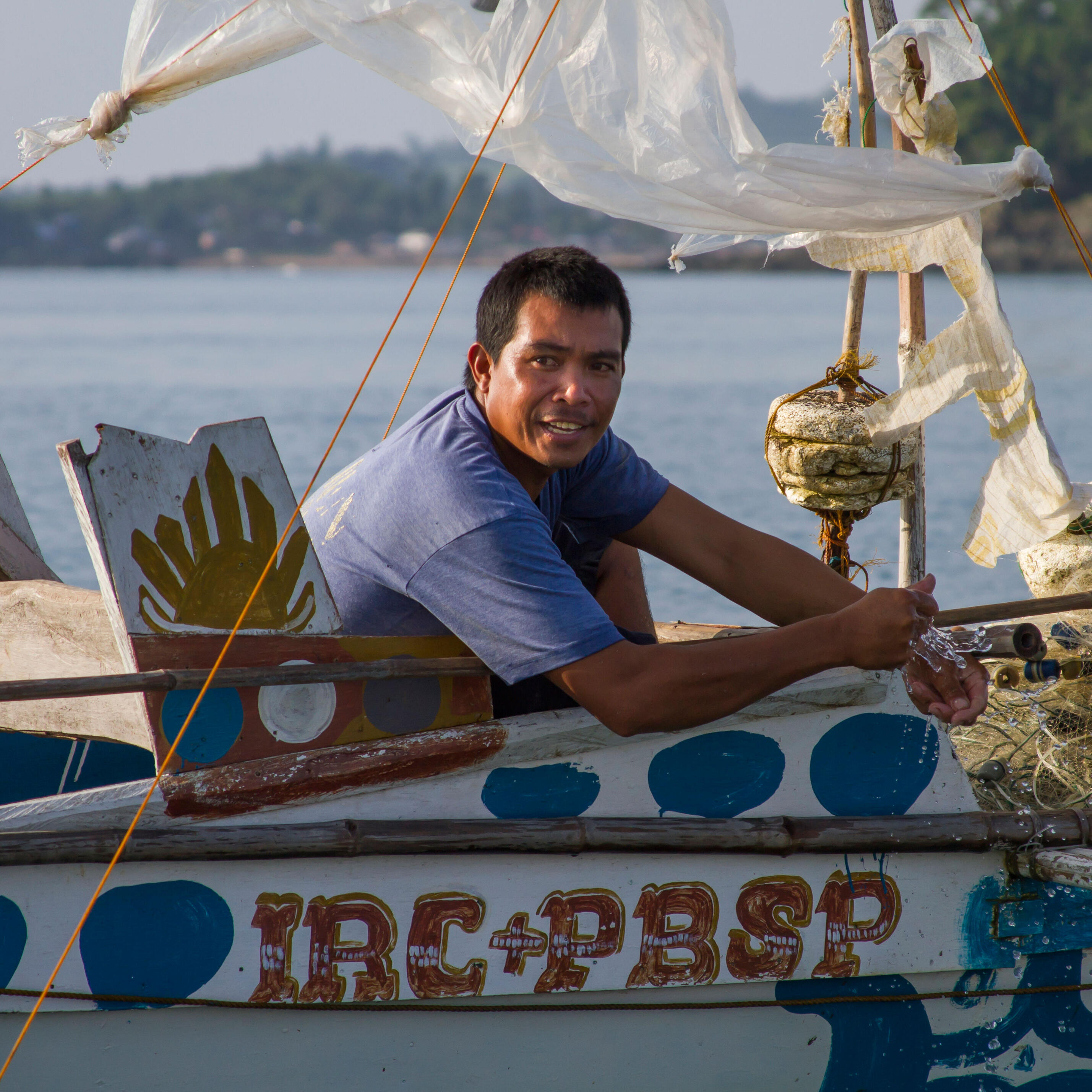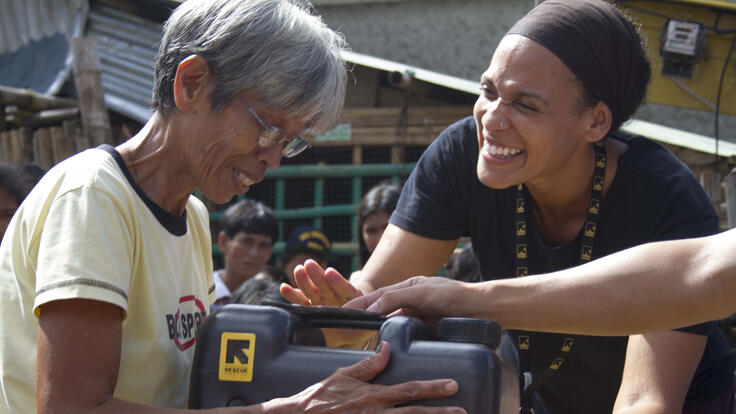Country facts
- Total population: 100 Million
- Number of people displaced by crisis: 4.1 million by Typhoon Haiyan
- Rank in Human Development Index: 113 of 188
IRC response
- Started working in: 2013, responding to Typhoon Haiyan
The Philippines, a Pacific island nation, is one of the most disaster prone countries in the world. The IRC responded to the devastation following Typhoon Haiyan and, subsequently, Typhoon Hagupit to help communities rebuild and prepare for future crises.
When Typhoon Haiyan ravaged the Philippines in November 2013, the IRC responded to help local communities rebuild, recover and prepare for future disasters.
One year later, on December 2014, Typhoon Hagupit struck the islands. Because of the emergency preparations made following Haiyan, IRC partners were able to provide immediate assistance and save lives.
The Philippines is one of the most disaster prone countries in the world. Each year, on average, the Philippines is hit by 22 tropical cyclones, several of which cause significant damage. In 2013, Typhoon Haiyan destroyed homes and had a devastating effect on the country’s fishing economy.
In addition to natural disasters, hundreds of thousands of Filipinos in the southern island of Mindanao have been forced from their homes during decades of ethnic conflict.
The IRC and our partners provide emergency assistance to people uprooted by conflict and disaster. After Typhoon Haiyan struck the Philippines, the IRC immediately deployed a team to the country to provide vital humanitarian assistance. We focused on three severely affected but remote areas in the Western Visayas region: Capiz, Iloilo and northern Cebu. The IRC:
- provided water storage containers and other emergency supplies
- provided vouchers and small cash grants to the most vulnerable storm victims to pay for construction materials and labour to rebuild their homes
- worked with Philippine Business for Social Progress to supply fishermen with motor boats, and to install artificial reefs and plant mangroves to protect the shore from erosion and provide a spawning area for fish
- worked with the Ramon Aboitiz Foundation, Inc., to rebuild 20 day care centres that will double as shelters during future storms
- trained 21 day care teachers using our “healing classrooms” approach that helps teachers develop a safe and caring learning environment for students who have survived conflict and natural disasters
- continued to work with devastated communities months after the disaster to help them rebuild and prepare for future storms
The IRC will continue to work with national partners to respond to natural disasters and other crisis.
We pledge to put the needs of the most vulnerable—often women, children and the elderly—at the forefront of our efforts.
We will continue to build capacities and strengthen existing emergency response and preparedness.
10,000
Curabitur laoreet viverra malesuada. Sed dictum massa ac lectus eleifend facilisis.
Integer ut felis quam. Aenean ornare erat quis justo iaculis, quis euismod velit egestas.
10,000
Curabitur laoreet viverra malesuada. Sed dictum massa ac lectus eleifend facilisis.
Integer ut felis quam. Aenean ornare erat quis justo iaculis, quis euismod velit egestas.
10,000
Curabitur laoreet viverra malesuada. Sed dictum massa ac lectus eleifend facilisis.
Integer ut felis quam. Aenean ornare erat quis justo iaculis, quis euismod velit egestas.

